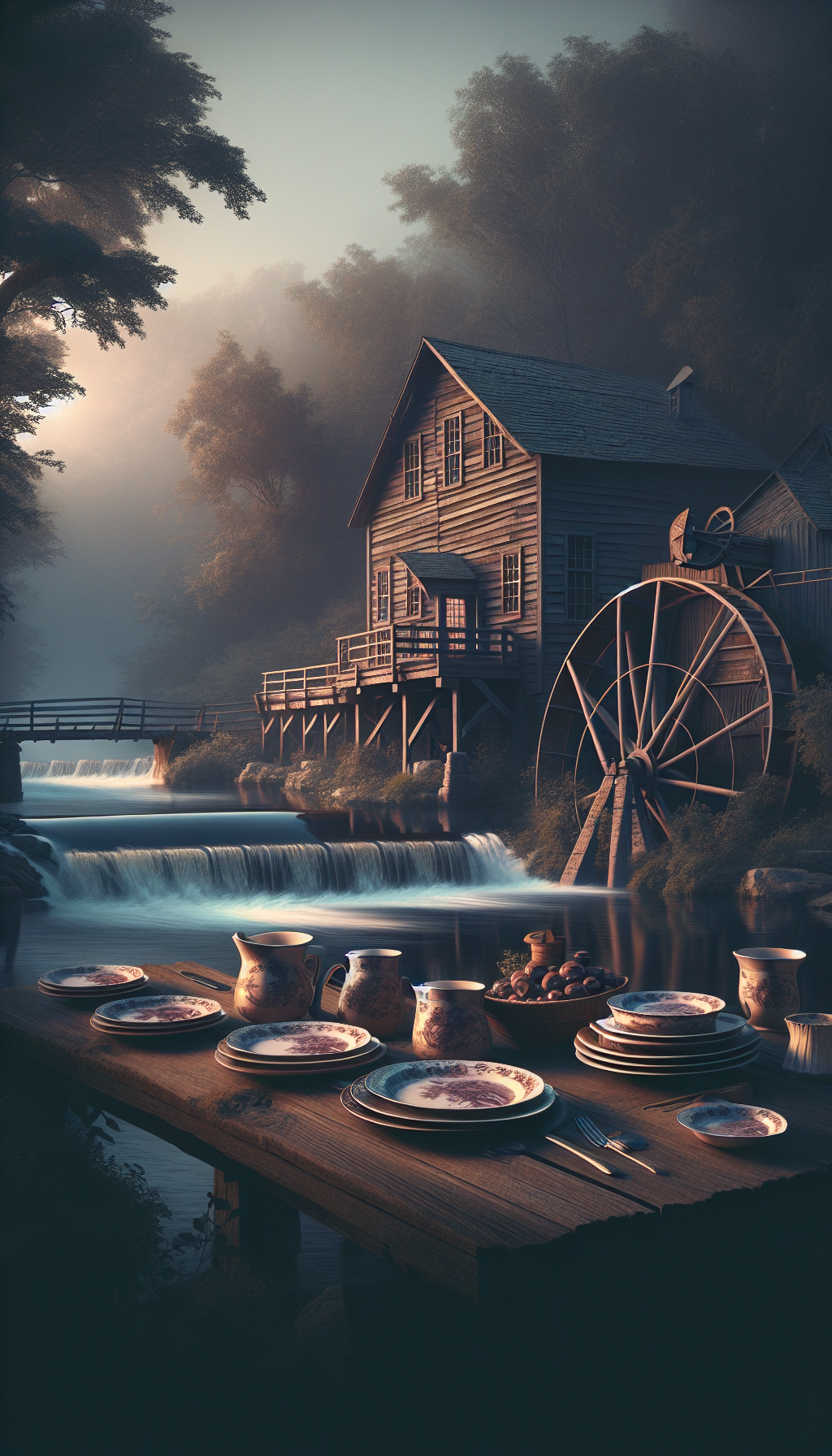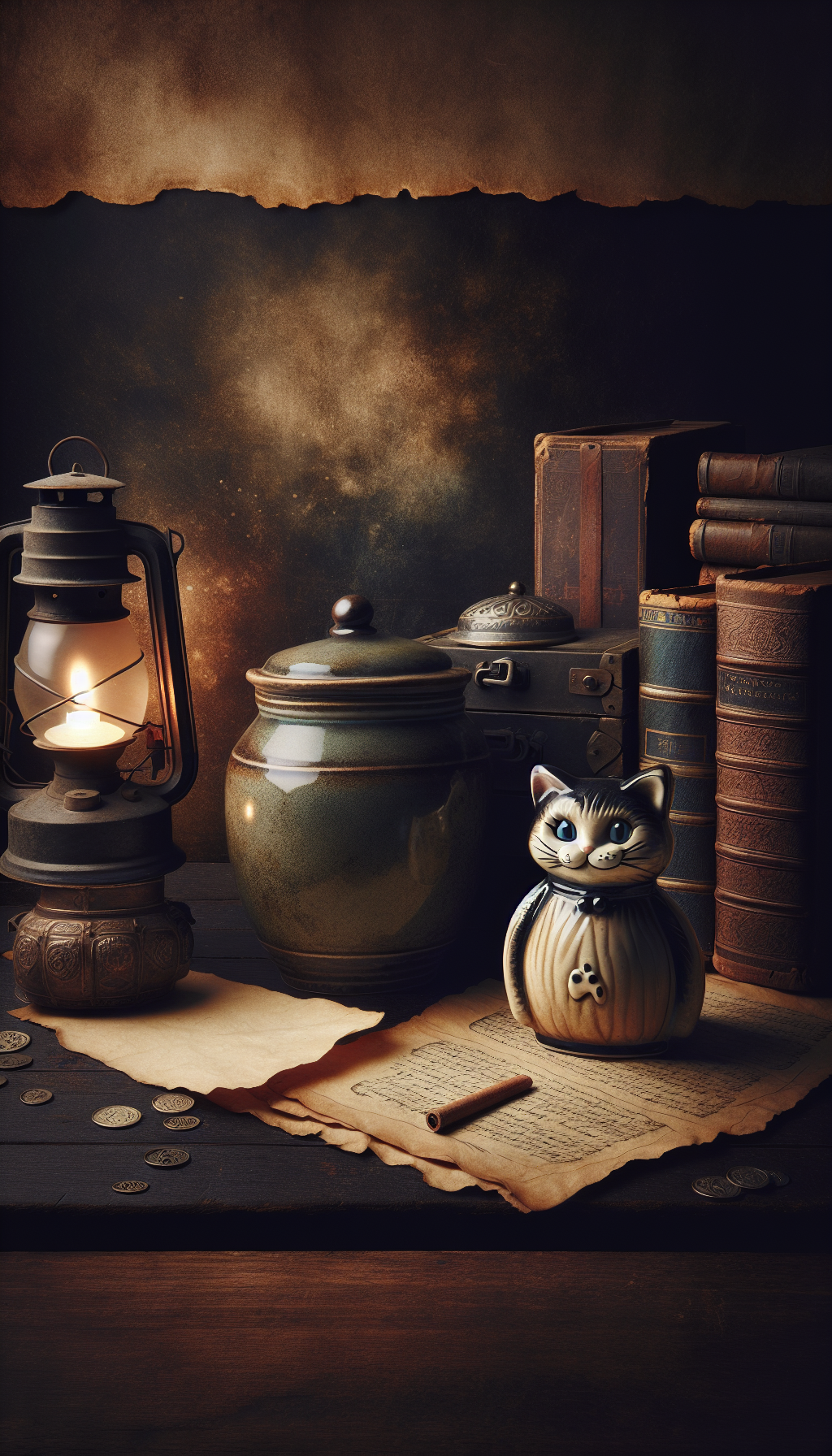David Macdonald Original Stoneware Shield Of The North
Studio stoneware attracts collectors for its tactility, durability, and the way a maker’s hand and regional identity come through in clay and glaze. Works attributed to David Macdonald and titled Shield of the North sit squarely in this realm: robustly fired stoneware with a protective, heraldic character that suggests northern landscapes and traditions. Whether your piece is a wall-mounted plaque, a shield-shaped platter, or a sculptural emblem, this guide explains how to evaluate authenticity, condition, and market value without guesswork.
Understanding the piece and its place in studio pottery
“Shield of the North” reads like a title with intent—an emblem of place. In studio ceramics, makers frequently embed regional identity in form and surface: iron-rich clays and ash glazes evoke heath and moor; angular, shield-like silhouettes echo vernacular armor and heraldry. When a piece carries a title linking it to “the North,” expect the design to communicate protection, endurance, and landscape.
Stoneware is the right medium for that message. Fired to high temperatures (commonly 1200–1300°C), stoneware becomes vitrified and resonant, with a dense, tough body and a glaze matrix that can hold iron speckling, ash rivulets, or satin-matte feldspathic sheens. A Shield of the North in stoneware is typically:
- Substantial in weight for its size (stoneware is denser than earthenware).
- Cooler in tone in the paste (body) when broken or unglazed—often gray to buff with iron freckles rather than the reddish core seen in earthenware.
- Finished with glazes that fit the body well (limited crazing) and can withstand handling and wall display.
Because studio works are hand-formed, expect small asymmetries, tool marks, and evidence of intentional making. At close range, these cues distinguish originals from molded decor pieces.
Untangling the name: verifying the maker
There are multiple artists named David Macdonald/MacDonald/McDonald across ceramics and other media. Correct attribution is essential before discussing value. Work methodically:
- Spelling and capitalization: Confirm whether the piece uses Macdonald, MacDonald, or McDonald. Makers are usually consistent in how they sign or stamp their name.
- Signature form: Some potters sign fully (“David Macdonald”), others use initials (DM) or a monogram stamp. Note the letterforms, pressure, and where the mark sits (verso of a plaque, footrim of a platter, lower reverse of a shield form).
- Studio context: If there is a studio stamp or label, record it verbatim. A location—town, county, or a known pottery name—often clinches identity and helps date the work.
- Title evidence: “Shield of the North” might appear in incised script, graphite on a paper label, a gallery tag, or a certificate. Write down every word exactly as given, including punctuation, alongside dimensions and any stock codes.
- Provenance: Keep track of purchase receipts, gallery invoices, or exhibition catalogues. Even brief notes like “purchased at winter studio sale, 2003” help establish timeline and authenticity.
- Comparables: Look for other documented works by the same David Macdonald with similar marks, clay body, and glaze combinations. Side-by-side comparison of signatures and construction details guards against misattribution.
If your research keeps surfacing more than one plausible potter with the same name, weigh the regional fit of the piece. A shield carrying northern motifs and robust high-fired glazes points to a maker engaged with northern British or northern-influenced studio traditions; patterned earthenware with bright slips, by contrast, signals a different practice.
How to authenticate: materials, marks, and workmanship
To appraise a David Macdonald stoneware Shield of the North confidently, move from the tangible to the documentary.
Body and build:
- Feel: The piece should feel dense with a balanced weight distribution. A wall plaque or shield often has a slightly thicker perimeter or integral ridge to resist warping.
- Sound: A gentle knuckle tap should produce a clear, even ring. A dull tone can indicate a crack, repair, or firing stress.
- Back and edges: The reverse side tells the truth. Look for neatly finished edges, a trimmed or carefully smoothed back, and any mounting provisions (cord holes, lugs, or a recessed channel). Hand-drilled suspension holes will show slight irregularity.
Surface and glaze:
- Glaze fit: High-fired stoneware glazes should lie comfortably on the body. Occasional pinholes or ash deposits are kiln artifacts and not faults; widespread crawling or unintentional blistering suggests a glaze issue.
- Palette and effect: Expect earthy tones—iron browns, oatmeal, ash greens, slate, or smoky celadon—consistent with northern studio vocabularies. Oxide brushwork, incised lines, or relief carving can define heraldic devices or abstract shields.
- Intentional marks: Finger-wipes on glaze margins, wire-cut traces, and trimming spirals confirm hand processes.
Signatures, stamps, and inscriptions:
- Placement: Check the lower reverse for plaques, the underside or foot rim for platters, or a discrete corner for sculptural shield forms.
- Type: Impressed stamps are clean and repeatable; incised signatures vary but have a consistent hand. Monograms may combine D and M; note how strokes connect.
- Ancillaries: Exhibition labels or retailer stickers can be period clues. Photograph them before they detach.
Dating:
- Materials evolve. Changes in clay recipe, glaze palette, and signature style over time can help place the work within a maker’s career. Build a small reference timeline from any dated examples you find.
- Firing evidence: Soda or salt-flashed surfaces, kiln shelf scars, or wadding marks can be time-and-method markers.
Red flags:
- Mismatched stories: A piece claimed as stoneware that chips like terracotta may actually be earthenware.
- Painted-on marks: Overglaze “signatures” added later are suspect if there’s no corresponding impressed or incised mark.
- Overpolished repairs: An unnaturally glossy patch or mismatched sheen on the reverse often hides restoration.
Condition, conservation, and value drivers
In studio ceramics, value is rooted in authenticity, artistic strength, and condition. For a stoneware Shield of the North:
Typical condition issues:
- Edge chips on projecting rims or points of a shield outline.
- Surface abrasion to high points of relief.
- Firing hairlines at stress points; they often stop short and follow form lines.
- Mounting wear around suspension holes; look for enlarged holes or glaze rub.
- Previous restorations: Overpaint may hide chips; UV light can reveal retouching. A filled chip glows dull under magnification and has a different fluorescence under UV.
Conservation approach:
- Stabilize first. If a suspension hole is fatigued, consider a custom bracket rather than reusing a compromised cord.
- Cleaning: Dust with a soft brush. If necessary, use a barely damp microfiber cloth with pH-neutral water. Avoid detergents, acids, and abrasive pads.
- Professional repairs: If a visible break crosses important surface detail, museum-quality restoration preserves value better than DIY fixes.
Value drivers:
- Maker certainty: A securely attributed David Macdonald carries more weight than an “in the manner of.”
- Form and scale: Large, well-resolved shield forms or complex plaque compositions tend to outperform small studies.
- Surface quality: Strong, confident carving or brushwork and well-matured glazes add value.
- Title and narrative: Works titled Shield of the North or otherwise evocative often appeal to regional collectors and can command a premium.
- Provenance and exhibition history: A gallery label, prior exhibition, or publication mention materially helps.
- Rarity and period: Early, experimental examples and late, summative works can both be desirable; mid-career maturity often sets the benchmark for comparables.
Market context:
- Studio stoneware plaques by regionally recognized makers commonly trade from the low hundreds to low thousands in local and national auctions, with outliers when scale, provenance, or art-historical importance align.
- Retail gallery prices tend to be higher than auction hammer results; insurance values often sit at replacement retail.
Always base estimates on recent, comparable sales for the same maker, material, and scale, and adjust for condition.
Practical appraisal checklist
- Confirm the exact spelling of the name and capture a clear photo of the mark.
- Record dimensions, weight, and a full description (form, glaze, decoration, mounting).
- Photograph front, back, edges, signature, and any labels in diffuse daylight.
- Test the ring gently; note any dull areas that may indicate a crack or repair.
- Examine suspension points and edges for chips, hairlines, or restoration.
- Note how the title appears (incised, label, or paperwork) and copy it verbatim.
- Compare your mark and workmanship with at least three documented examples by the same David Macdonald.
- Assemble provenance: receipts, gallery tags, correspondence, and dates.
- Identify three recent sales of similar works (same maker, form, and size) to set a value range.
- Store and display with secure, non-abrasive mounts; avoid direct sunlight and drastic humidity shifts.
FAQ
Q: How can I tell if my piece is stoneware rather than earthenware? A: Stoneware is denser and more vitrified. It feels heavier for its size, has a tighter, often gray-to-buff body where unglazed, and produces a clearer ring when tapped. Earthenware is typically lighter, more porous, and often shows a warm reddish core where unglazed.
Q: My Shield of the North has crazing. Is that a fault? A: Fine crazing is less common on high-fired stoneware than on earthenware, but it can occur, especially with certain glazes or thermal stress. Sparse, stable crazing may be acceptable; widespread, stained crazing can reduce value. Note it carefully in condition reports.
Q: Should I clean the surface before appraisal? A: Light dusting is fine. If there are greasy deposits, use a slightly damp, pH-neutral microfiber cloth. Avoid chemicals, abrasive pads, or soaking—these can alter the glaze surface and complicate conservation.
Q: There’s no signature. Can it still be by David Macdonald? A: Possibly. Some studio works carry only a monogram, a studio stamp, or a paper label that may have been lost. In such cases, attribution relies on a body of evidence—clay, glaze, construction, and documented comparables. A specialist opinion is recommended.
Q: How should I mount and display a stoneware shield or plaque safely? A: Use purpose-made plate hangers or custom brackets that support the piece from beneath and around edges without point pressure. Pad contact points with inert felt or silicone bumpers. Avoid wire alone through aged holes if the clay shows stress or chipping.
By moving carefully through materials, marks, workmanship, and comparables—and by documenting each step—you can appraise a David Macdonald Original Stoneware Shield of the North with the rigor collectors and insurers expect.




